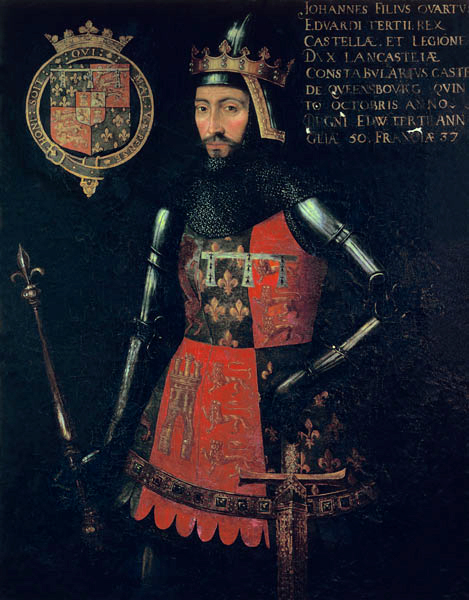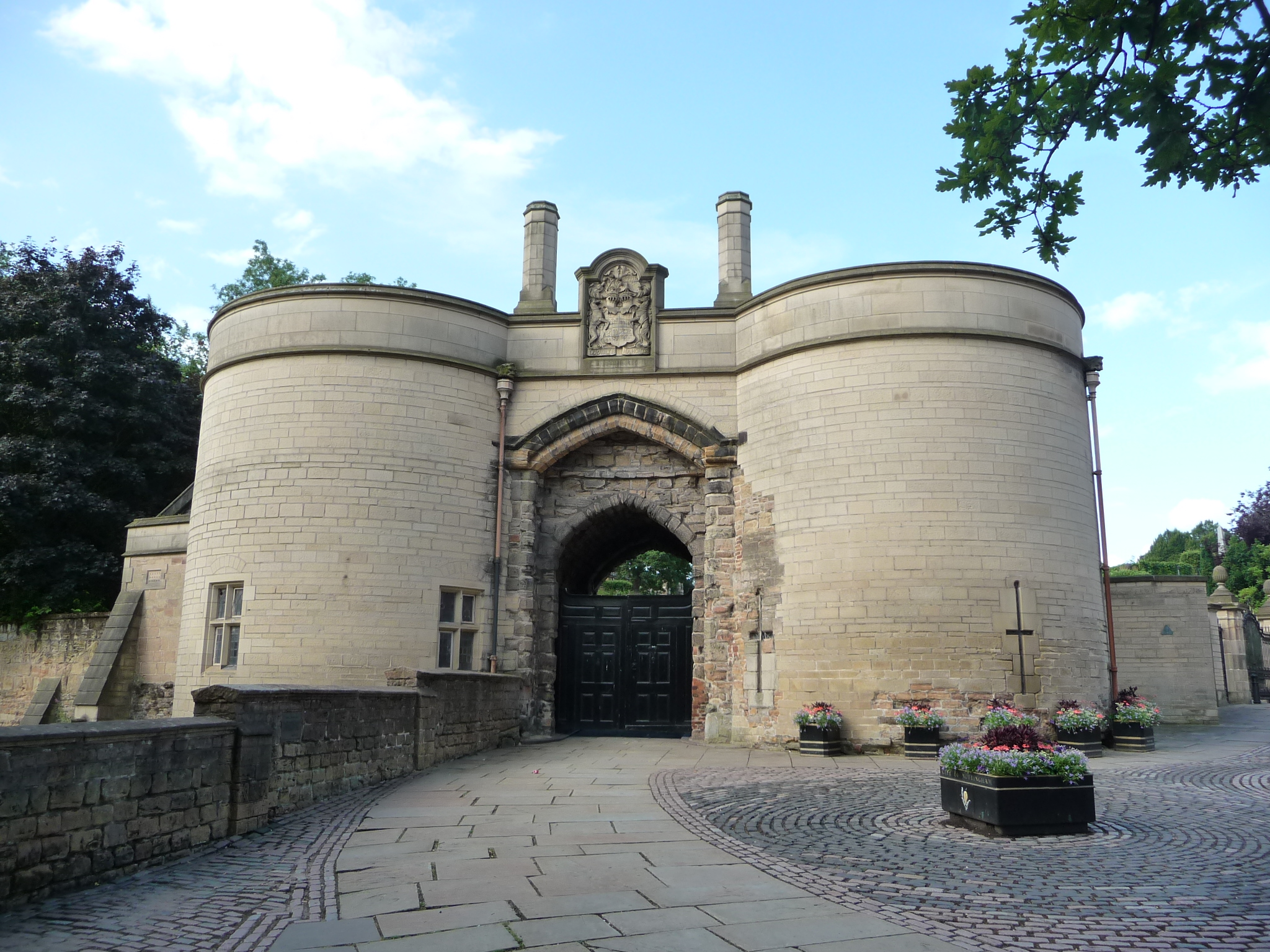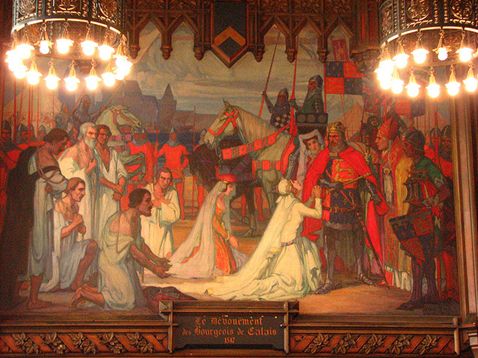|
Battle Of Edgecote Moor
The Battle of Edgcote (also known as the Battle of Banbury or the Battle of Danes Moor) took place on 24 July 1469, during the Wars of the Roses. It was fought between a royal army, commanded by the earls of William Herbert, 1st Earl of Pembroke (1423-1469), Pembroke and Humphrey Stafford, 1st Earl of Devon, Devon, and a rebel force led by supporters of the Richard Neville, 16th Earl of Warwick, Earl of Warwick. The battle took place northeast of Banbury in Oxfordshire; it resulted in a rebel victory which temporarily handed power over to the Earl of Warwick. By September, though, Edward IV of England was back in control, and Warwick found himself in a situation similar to the one before the battle, prompting him to plan a second rebellion. After Edgcote there was no turning back. Edward could no longer trust him fully and he was inexorably moving towards becoming a House of Lancaster, Lancastrian. Edgcote has a reputation for being one of the least well-documented battles of ... [...More Info...] [...Related Items...] OR: [Wikipedia] [Google] [Baidu] |
Wars Of The Roses
The Wars of the Roses, known at the time and in following centuries as the Civil Wars, were a series of armed confrontations, machinations, battles and campaigns fought over control of the English throne from 1455 to 1487. The conflict was fought between supporters of the House of Lancaster and House of York, two rival cadet branches of the royal House of Plantagenet. The conflict resulted in the end of Lancaster's male line in 1471, leaving the Tudors of Penmynydd, Tudor family to inherit their claim to the throne through the female line. Conflict was largely brought to an end upon the union of the two houses through marriage, creating the Tudor dynasty that would subsequently rule England. The Wars of the Roses were rooted in English socio-economic troubles caused by the Hundred Years' War (1337–1453) with France, as well as the quasi-military bastard feudalism resulting from the powerful duchies created by King Edward III. The mental instability of King Henry VI of Englan ... [...More Info...] [...Related Items...] OR: [Wikipedia] [Google] [Baidu] |
Sir John Conyers
Sir John Conyers (died 1490), one of twenty-five children of Christopher Conyers (bailiff of Richmond), Christopher Conyers (died 1460),Ross, C.D., ''Richard III'', London 1981, p.50 was a pre-eminent member of the gentry of Yorkshire, northern England, during the fifteenth century Wars of the Roses. Life and career Based in Hornby Castle, Yorkshire, Hornby Castle, he was originally retained by his patron, the regional magnate Richard Neville, 5th Earl of Salisbury, Richard Neville, Earl of Salisbury at a fee of £8 6''s.'' 8''d.'' By 1465, he was steward of the Honour of Richmond and was being retained, along with his brothers William and Richard, by Salisbury's son and successor as regional magnate, the Richard Neville, 16th Earl of Warwick, earl of Warwick, for which he received £13 6''s.'' 8''d.'' He accompanied Salisbury on his journey from Middleham, Yorkshire, Middleham to Ludlow in September 1459, and took part in the Battle of Blore Heath on the 23rd of that month. He ... [...More Info...] [...Related Items...] OR: [Wikipedia] [Google] [Baidu] |
Dorchester, Dorset
Dorchester ( ) is the county town of Dorset, England. It is situated between Poole and Bridport on the A35 trunk route. A historic market town, Dorchester is on the banks of the River Frome, Dorset, River Frome to the south of the Dorset Downs and north of the South Dorset Ridgeway that separates the area from Weymouth, Dorset, Weymouth, to the south. The civil parish includes the experimental community of Poundbury and the suburb of Fordington, Dorset, Fordington. The area around the town was first settled in prehistoric times. The Roman Britain, Romans established a garrison there after defeating the Durotriges tribe, calling the settlement that grew up nearby Durnovaria; they built an Roman aqueduct, aqueduct to supply water and an amphitheatre on an ancient British earthwork. During the medieval period Dorchester became an important commercial and political centre. It was the site of the "Bloody Assizes" presided over by George Jeffreys, 1st Baron Jeffreys, Judge Jeffrey ... [...More Info...] [...Related Items...] OR: [Wikipedia] [Google] [Baidu] |
Raglan Castle
Raglan Castle () is a Late Middle Ages, late medieval castle located just north of the village of Raglan, Monmouthshire, Raglan in the county of Monmouthshire in south east Wales. The modern castle dates from between the 15th and early 17th centuries, when the successive ruling families of the Baron Herbert, Herberts and the Duke of Beaufort, Somersets created a luxurious, fortified castle, complete with a large hexagonal keep, known as the Great Tower or the Yellow Tower of Kingdom of Gwent, Gwent. Surrounded by medieval deer park, parkland, water gardens and Terrace garden, terraces, the castle was considered by contemporaries to be the equal of any other in England or Wales. During the First English Civil War, Raglan was occupied by a Cavalier, Royalist garrison on behalf of Charles I of England, Charles I but was taken by Roundhead, Parliamentarian forces in 1646 and its walls slighting, slighted, or deliberately put beyond military use. After the Stuart Restoration in 1660, ... [...More Info...] [...Related Items...] OR: [Wikipedia] [Google] [Baidu] |
Nottingham
Nottingham ( , East Midlands English, locally ) is a City status in the United Kingdom, city and Unitary authorities of England, unitary authority area in Nottinghamshire, East Midlands, England. It is located south-east of Sheffield and north-east of Birmingham. Nottingham is the legendary home of Robin Hood and to the lace-making, bicycle and Smoking in the United Kingdom, tobacco industries. The city is also the county town of Nottinghamshire and the settlement was granted its city charter in 1897, as part of Queen Victoria's Diamond Jubilee celebrations. In the 2021 United Kingdom census, 2021 Census, Nottingham had a reported population of 323,632. The wider conurbation, which includes many of the city's suburbs, has a population of 768,638. It is the largest urban area in the East Midlands and the second-largest in the Midlands. Its Functional Urban Area, the largest in the East Midlands, has a population of 919,484. The population of the Nottingham/Derby metropolitan a ... [...More Info...] [...Related Items...] OR: [Wikipedia] [Google] [Baidu] |
London
London is the Capital city, capital and List of urban areas in the United Kingdom, largest city of both England and the United Kingdom, with a population of in . London metropolitan area, Its wider metropolitan area is the largest in Western Europe, with a population of 14.9 million. London stands on the River Thames in southeast England, at the head of a tidal estuary down to the North Sea, and has been a major settlement for nearly 2,000 years. Its ancient core and financial centre, the City of London, was founded by the Roman Empire, Romans as Londinium and has retained its medieval boundaries. The City of Westminster, to the west of the City of London, has been the centuries-long host of Government of the United Kingdom, the national government and Parliament of the United Kingdom, parliament. London grew rapidly 19th-century London, in the 19th century, becoming the world's List of largest cities throughout history, largest city at the time. Since the 19th cen ... [...More Info...] [...Related Items...] OR: [Wikipedia] [Google] [Baidu] |
William Herbert, 1st Earl Of Pembroke (died 1469)
William Herbert, 1st Earl of Pembroke KG ( 142327 July 1469), known as "Black William", was a Welsh nobleman, soldier, politician, and courtier. Life He was the son of William ap Thomas, founder of Raglan Castle, and Gwladys ferch Dafydd Gam, and grandson of Dafydd Gam, an adherent of King Henry V of England. His father had been an ally of Richard of York, and Herbert supported the Yorkist cause in the Wars of the Roses. In 1461 Herbert was rewarded by King Edward IV with the title Baron Herbert of Raglan (having assumed an English-style surname in place of the Welsh patronymic), and was invested as a Knight of the Garter. Soon after the decisive Yorkist victory at the Battle of Towton in 1461, Herbert replaced Jasper Tudor as Earl of Pembroke which gave him control of Pembroke Castle – and with it, he gained the wardship of young Henry Tudor. However, he fell out with Lord Warwick "the Kingmaker" in 1469, when Warwick turned against the King. Herbert was denounc ... [...More Info...] [...Related Items...] OR: [Wikipedia] [Google] [Baidu] |
George Neville (archbishop)
George Neville ( 1432 – 8 June 1476) was Archbishop of York from 1465 until 1476 and Chancellor of England from 1460 until 1467 and again from 1470 until 1471. Life Neville was the youngest son of Richard Neville, 5th Earl of Salisbury, and Alice Montagu, 5th Countess of Salisbury. He was the brother of Richard Neville, 16th Earl of Warwick, known as the "Kingmaker."Cokayne ''Complete Peerage: Volume XI'' p. 398 He was educated at Balliol College, Oxford, and was from his childhood destined for the clerical profession, in which through the great influence of his family he obtained rapid advancement, becoming Bishop of Exeter in 1458. He was provided to the see on 4 February 1458 and consecrated on 3 December 1458.Fryde, et al. ''Handbook of British Chronology'' p. 247 From this time forward Neville took a prominent part in the troubled politics of the period. He was present with his brother Warwick at the Battle of Northampton (1460), Battle of Northampton in July 1460, ... [...More Info...] [...Related Items...] OR: [Wikipedia] [Google] [Baidu] |
Calais
Calais ( , , traditionally , ) is a French port city in the Pas-de-Calais department, of which it is a subprefecture. Calais is the largest city in Pas-de-Calais. The population of the city proper is 67,544; that of the urban area is 144,625 (2020). and it is reflected in the city's name in the local Picard language, ''Calés''. Other archaic names for the city are Portuguese ''Calêsio'' and German ''Kalen''. ''Kales'', the city's historic name in Dutch and West Flemish (once spoken in the area) was retained until more recently in the name for the Strait of Dover, ''Nauw van Kales'', and is still used in Dutch sources wishing to emphasise former linguistic ties to the area. Though the modern French spelling of ''Calais'' gradually supplanted other variants in English, the pronunciation () persisted and survives in other towns named for the European city including Calais, Maine, and Calais, Vermont, in the United States. In " De Gustibus" (1855), Robert Browning r ... [...More Info...] [...Related Items...] OR: [Wikipedia] [Google] [Baidu] |
Crowland
Crowland (modern usage) or Croyland (medieval era name and the one still in ecclesiastical use; cf. ) is a town and civil parish in the South Holland district of Lincolnshire, England. It is situated between Peterborough and Spalding. Crowland contains two sites of historical interest, Crowland Abbey and Trinity Bridge. History The town's two historical points of interest are the ruined medieval Crowland Abbey and the 14th-century three-sided bridge, Trinity Bridge, which stands at its central point and once spanned the divergence of the River Welland and a distributary. In about 701, a monk named Guthlac came to what was then an island in the Fens to live the life of a hermit. Following in Guthlac's footsteps, a monastic community came into being here, which was dedicated to Saint Mary the Virgin, Saint Bartholomew and Saint Guthlac in the 8th century. The place-name 'Crowland' is first attested circa 745 AD in the ''Vita S. Guthlaci auctore Felice'', reprinted in t ... [...More Info...] [...Related Items...] OR: [Wikipedia] [Google] [Baidu] |
Lincolnshire
Lincolnshire (), abbreviated ''Lincs'', is a Ceremonial counties of England, ceremonial county in the East Midlands and Yorkshire and the Humber regions of England. It is bordered by the East Riding of Yorkshire across the Humber estuary to the north, the North Sea to the east, Norfolk, Cambridgeshire, Northamptonshire and Rutland to the south, and Leicestershire, Nottinghamshire and South Yorkshire to the west. The county is predominantly rural, with an area of and a population of 1,095,010. After Lincoln (104,565), the largest towns are Grimsby (85,911) and Scunthorpe (81,286). For Local government in England, local government purposes Lincolnshire comprises a non-metropolitan county with seven districts, and the unitary authority areas of North Lincolnshire and North East Lincolnshire. The last two areas are part of the Yorkshire and the Humber region, and the rest of the county is in the East Midlands. The non-metropolitan county council and two unitary councils collabora ... [...More Info...] [...Related Items...] OR: [Wikipedia] [Google] [Baidu] |
John Neville, 1st Marquess Of Montagu
John Neville, 1st Marquess of Montagu (c. 1431 – 14 April 1471) was a major magnate of fifteenth-century England. He was a younger son of Richard Neville, 5th Earl of Salisbury, and the younger brother of Richard Neville, Earl of Warwick, the "Kingmaker". From an early age, he was involved in fighting for his House, particularly in the feud that sprang up in the 1450s with the Neville family's major regional rivals, the Percy family. John Neville was personally responsible for much of the violence until, with his brothers, they defeated and imprisoned their enemies. This was taking place against the backdrop of a crisis in central government. The king, Henry VI, already known to be a weak ruler, suffered a mental collapse which led to a protectorate headed by John's uncle, Richard, Duke of York. Within two years an armed conflict had broken out, with York openly in rebellion against the king, and his Neville cousins supporting him. John fought with his father and Warw ... [...More Info...] [...Related Items...] OR: [Wikipedia] [Google] [Baidu] |







